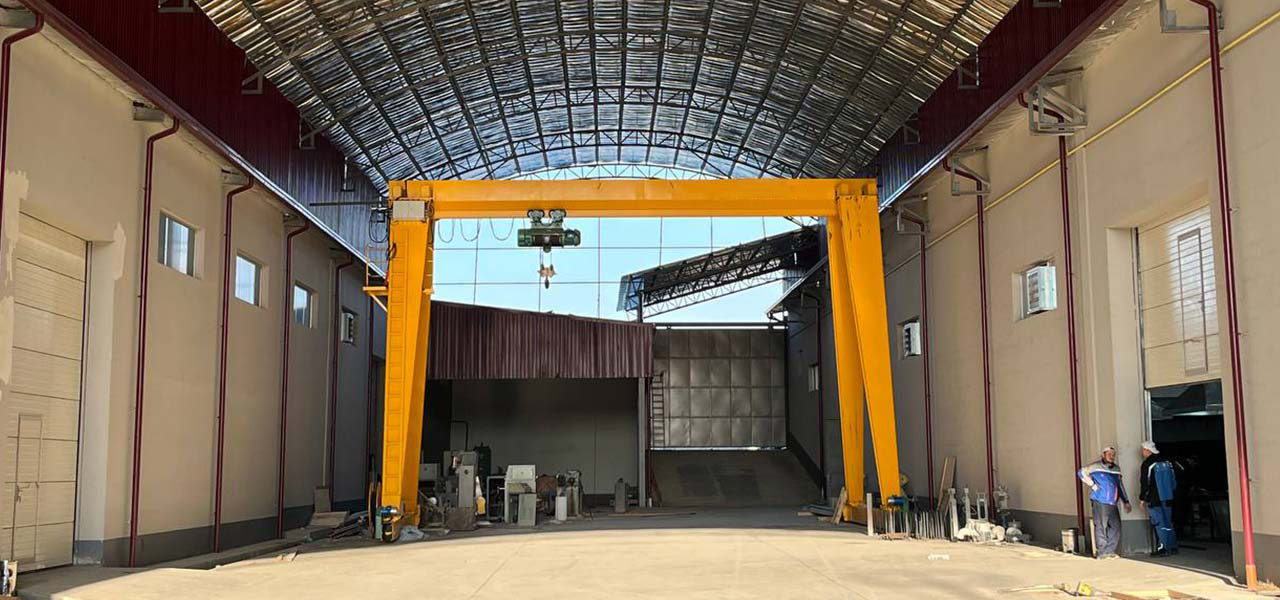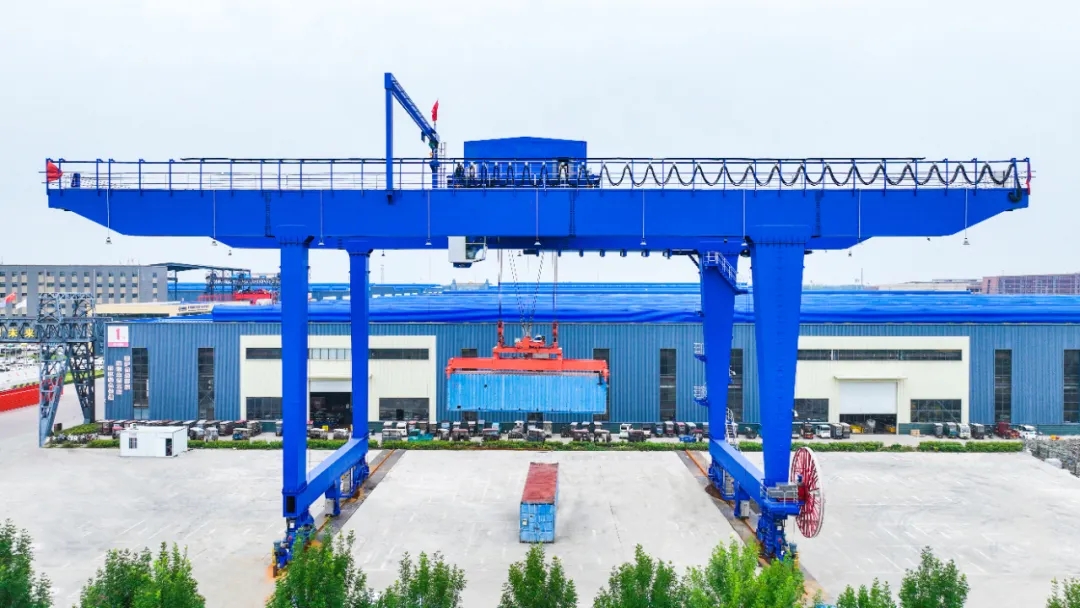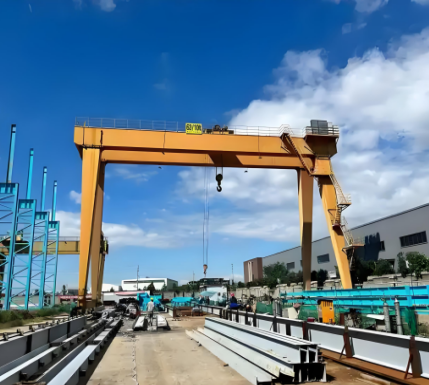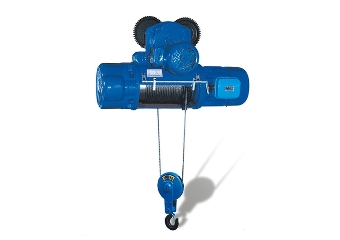Electric Hoist Gantry Crane: A Complete Sizing & Selection Guide
Choosing the right electric hoist gantry crane comes down to matching load geometry, duty class, span, hook lift, and power supply to your yard or shop workflow. This guide explains when to choose gantry + electric hoist, how to configure speeds and controls, what safety packs to specify, and the information engineers need to quote accurately.
Looking for an ISO/CE-certified global manufacturer?
👉 https://www.slkjcrane.com/global-gantry-crane-manufacturer-iso-ce-certified-slkjcrane/
Hoisting components & options:
👉 https://www.slkjcrane.com/electric-hoist/
Table of Contents
1.What Is an Electric Hoist Gantry Crane
2.When to Choose Gantry + Electric Hoist (vs. bridge crane or RTG)
3.Hoist Type vs. Gantry Type Matrix
4.Core Parameters to Define (capacity, span, lift, class, speeds)
5.Power Supply & Outdoor Packages
6.Safety, Controls & Productivity Options
7.Applications & Typical Attachments
8.Spec Ranges & Example Configurations
9.RFQ Checklist (what to send for a fast quote)
10.FAQs
1) What Is an Electric Hoist Gantry Crane
The gantry crane is equipped with an electric hoist and runs laterally along one or two main beams, and travels longitudinally on ground tracks or without tracks. Compared with bridge cranes, gantries avoid runway steelwork in buildings and excel outdoors or in mixed indoor/outdoor flows. Electric hoists (wire rope or chain) provide precise, low-noise lifting with VFD control and wide accessory support.
2) When to Choose Gantry + Electric Hoist
1. Operating conditions: Such as open-air warehouses, freight yards, loading and unloading sites inside and outside workshops, etc.
2. When the lifting capacity is medium (typically 1-32 tons) : It is more economical compared to heavy-duty gantry cranes and can meet the lifting requirements of medium and small-sized goods (such as steel and equipment).
3. When the lifting height/span is flexibly adapted: The span (such as 5-30 meters) and lifting height (5-15 meters) can be customized as needed to adapt to different site sizes.
4. When pursuing cost performance and convenience: The structure is simpler than that of bridge cranes, with lower installation and maintenance costs. Moreover, the electric hoist is easy to operate and suitable for daily production use.

3) Hoist Type × Gantry Type Matrix
| Use Case | Hoist Type | Gantry Type | Why |
|---|---|---|---|
| 0.5–5 t workshop moves, low headroom, frequent repositioning | Chain hoist | Portable / light single-girder | Compact, economical, easy to relocate |
| 5–32 t indoor/outdoor cells, precision set-down | Wire rope hoist (compact) | Single-girder | Smoother lifting, better duty capability |
| 5-50t indoor and outdoor storage yards, heavy load/long items | Wire rope hoist (open winch) | Double-girder | Higher stiffness, span, hook approach |
| Corrosive/coastal/low-temp environments | Wire rope or chain (with protection) | Single or double girder | IP/anti-corrosion/low-temp packages |
| Long parts (girders/coils/slabs) needing custom below-hook | Wire rope hoist | Double-girder | Pairs well with spreaders, C-hooks |
(You can mix hoist & gantry styles; engineering fit is case-by-case.)
4) Core Parameters to Define
A. Load
Maximum load (t
B. Span
The horizontal distance between the centerlines of two parallel support tracks;
C. Lifting height
The vertical distance of the hook (or lifting device) from the lowest working position to the highest working position.
D. Work Level (ISO/FEM)
According to the hourly cycle, daily working hours and load spectrum matching, generally A1 – A8.
E. Speed
Hoist: fine positioning + productivity (e.g., 0.5–8 m/min range-based)
Trolley: smooth approach across span (e.g., 2–20 m/min)
Gantry travel: throughput & yard layout (e.g., 3–30 m/min)
5) Power Supply & Outdoor Packages
Power options
Cable reel (long runs, simple maintenance)
Seamless or single stage sliding contact lines (continuous feeds, reduced drag)
Voltage/frequency to match site (e.g., 220-660 V, 50/60 Hz)
Outdoor kits
Wind area check, rail clamps / storm locks (for rail gantries)
IP-rated enclosures, heater/anti-condensation for cabinets
Corrosion protection (paint system, stainless fixings)
Low-temperature packages for sub-zero sites

6) Safety, Controls & Productivity
Overload limiter, upper/lower limiters, travel limit switches
Anti-sway control + inching mode for precision set-down
VFD on all axes for gentle acceleration and reduced wheel/rail wear
Remote control, cab control, or both; optional cameras/lighting
Data & diagnostics: fault logs, run-time counters, maintenance prompts
Emergency stops, phase loss/reversal, surge protection
7) Applications & Typical Attachments
Precast & Construction: molds, girders, box segments → spreader beams, mold frames
Steel & Metals: coils, slabs, plates → C-hooks, magnets, plate clamps
General Fabrication: jigs, fixtures, machine tools → rotating hooks, adjustable spreaders
Marine & Energy: blocks, nacelles, transformers → custom frames, tandem lifts
Hoisting components & options:
https://www.slkjcrane.com/electric-hoist/
8) Spec Ranges & Example Configurations
| Parameter | Typical Range / Notes |
|---|---|
| Capacity | 0.5–50 t (application-specific) |
| Span | 5–30 m+ |
| Hook Lift (H) | 6–12 m |
| Duty Class | ISO/FEM A1–A8 |
| Hoist Speed | 0.5–8 m/min (VFD) |
| Trolley Speed | 2–20 m/min (VFD) |
| Gantry Speed | 3–30 m/min (VFD) |
| Controls | Handle/remote control/driver’s cab Optional semi automatic positioning |
| Power | Cable drum/sliding contact line Outdoor IP protection |
| Environment | -40°C to +40°C, conventional; Low temperature/anti-corrosion packages are optional |
(Final specs are engineered to site conditions and workflow.)
9) RFQ Checklist (Send This for a Fast Quote)
Max/typical load (t) and load geometry/CG
Span (m), hook lift (m), Crane stroke
Working speed
Indoor/outdoor, wind area, corrosion, temperature range
Power preference (cable reel / busbar), site voltage/frequency
Controls (cab/pendant/radio), anti-sway, cameras, lighting
Yard drawings / aisles & turning info (if outdoors)
Target delivery window; installation & training needs
Contact Us Now
Have questions about our cranes or need help?
Reach out to our friendly team for expert support and guidance.
We are here to help you power your journey towards a greener future !
Address: Crane Industry Park, Xinxiang City Henan Provice
Frequently Asked Questions (FAQ)
Use chain hoists for 0.5–5 t, low headroom, frequent relocation; choose wire rope hoists for higher capacities, precision positioning, and longer duty cycles.
Single girder are suitable for light to medium loads and cost sensitive working conditions.
Double girder have higher rigidity and rigidity, and are suitable for heavy loads/long parts.
Yes—specify wind clamps/storm locks, IP-rated electrics, corrosion coatings, and (if needed) low-temperature packages.
Anti-sway, VFD on all axes, well-matched speeds, inching mode, and remote operation (with cameras/lighting) usually produce the fastest cycle-time wins.
General layout (GA), manual, electrical schematic diagram, installation video, load test certificate, and (as required) factory and on-site commissioning records.

Expert in Overhead Crane/Gantry Crane/Jib Crane/Crane Parts Solutions
Eileen Hu
With 20+ years of experience in the Crane Overseas Export Industry, helped 10,000+ customers with their pre-sales questions and concerns, if you have any related needs, please feel free to contact me!
Intermodal Gantry Cranes (RMG & RTG) — Engineering Playbook
Intermodal Gantry Cranes (RMG & RTG) — Engineering Playbook This engineering-oriented guide targets rail-to-truck operations, inland ports (ICDs),
Electric Hoist Gantry Crane: Complete Sizing & Selection Guide | SLKJCrane
Electric Hoist Gantry Crane: A Complete Sizing & Selection Guide Choosing the right electric hoist gantry crane comes
MG Double Girder Gantry Crane with Hook | Heavy-Duty Outdoor Lifting
MG Double Girder Gantry Crane with Hook: Structure, Specs & Applications An MG double girder gantry crane with
Steel Mill Wire Rope Lubrication for Metallurgical Hoists | Cut Downtime by 41%
Steel Mill Wire Rope Lubrication for Metallurgical Hoists: Root-Cause Fix & Proven Results Wire rope failures in steel




